 According to the 2021 IUCN Red List, 1,011 of the world’s 10,962 extant bird species are “Near Threatened “.
According to the 2021 IUCN Red List, 1,011 of the world’s 10,962 extant bird species are “Near Threatened “.
A “Near Threatened” species is close to qualifying for a threatened category in the near future.
The photographs of the “Near Threatened” species below have been archived by our Species Champions.
Haematopus moquini has a coastal breeding range which stretches from Lüderitz, Namibia, to Mazeppa Bay, Eastern Cape, South Africa. The total population is estimated to number 5,000-6,000 individuals (T. Dodman in litt. 2002 to Wetlands International 2002), with about half occurring along the Western Cape (South Africa) coastline, half of these on its near-shore islands.
3 Photos
This species is listed as Near Threatened owing to its moderately small population. If the population was found to be small and experiencing an ongoing decline, the species may qualify for a higher threat category. There are 7,000-13,000 in West and Central Africa and 8,000-12,000 in East Africa and South Africa (T. Dodman in litt. 2002), giving a total of 15,000-25,000 individuals, roughly equivalent to 10,000-17,000 mature individuals. The population is suspected to be in decline owing to wetland habitat degradation, over-exploitation and human disturbance.
4 Photos
Menura alberti is confined to a relatively small area of rainforest between Blackwall Range, New South Wales, and Mistake Range, Queensland, Australia. New South Wales is thought to support less than 800 pairs, with highest densities at Whian Whian State Conservation Area in Nightcap Range. This species is listed as Near Threatened as although it is restricted to a small range and number of locations and the number of individuals is small, favourable management (including protection of the most important population) has meant that habitat quality and numbers are not thought to be declining. Regular monitoring of both species and habitat is needed to confirm the continuing effectiveness of this management.
1 Photos
Psittacula eupatria is widespread in South and South-East Asia, ranging from Pakistan, India, Sri Lanka, Nepal, Bhutan and Bangladesh, Myanmar, Thailand, Laos, Cambodia and southern Vietnam. This species has been uplisted from Least Concern on the basis of new information about its population trend. It is listed as Near Threatened because, although it remains common in some areas and the status is clouded by feral populations, it is suspected to be undergoing a moderately rapid population decline owing to on-going habitat loss, persecution and trapping pressure.
2 Photos
Ardeotis arabs occurs in Mauritania, Senegal, Gambia, Mali, Burkina Faso, Niger, Nigeria, Chad, Sudan, South Sudan, Kenya, Eritrea, Ethiopia, Djibouti, Somalia, Saudi Arabia and Yemen. This species has been uplisted to Near Threatened on the basis that it is suspected to be undergoing a moderately rapid decline owing primarily to hunting pressure and habitat degradation.
3 Photos
Rhynchostruthus percivali occurs in Saudi Arabia, Oman and Yemen. It is generally scarce and difficult to locate even at known sites with an approximate population estimate of c.3,000 pairs in Saudi Arabia, Oman and Yemen. This species has been classfied as Near Threatened owing to its moderately small and potentially declining population.
3 Photos
The Asian Dowitcher is the largest dowitcher in Asia and is facing threats due to habitat loss, pollution and climate change across its narrow range but particularly in its wintering grounds. They breed in eastern Russia as well as northern Mongolia and China. They migrate along the East Asian coast to wintering grounds in southeast Asia, with some traveling all the way to the northern coast of Australia.
1 Photos
This species has an extremely large range and consists of several subpopulations using different flyways. The lapponica subspecies which breeds and winters within Europe is thought to be experiencing an increase in the wintering population but the breeding trend is unknown. Of the taymyrensis subspecies which breeds in Siberia the population wintering in west and south-west Africa is estimated to be declining whilst the trend for the population wintering in south and south-west Asia and east Africa is not known. Two subspecies, menzbieri and baueri, use the East Asian-Australasian Flyway and are both undergoing extremely rapid declines, probably owing to severe habitat loss in the Yellow Sea. As a result of severe declines in populations using the East Asian-Australasian Flyway the species has been uplisted to Near Threatened.
15 Photos
This species is classified as Near Threatened because it is suspected to have undergone moderately rapid declines during the past three generations (41 years) owing to habitat loss and incidental poisoning and pollution, and is consequently believed to approach the threshold for classification as Vulnerable. Putative reasons for declines vary, but include poisoned baits, pesticides, trapping for international trade, nest disturbance from spreading human settlements, and increased intensification and degradation of agricultural land (Ferguson-Lees and Christie 2001, N. Baker in litt. 2005, S. Thomsett in litt. 2005). The major cause of the decline seems to be almost entirely poisoning by a few large-scale commercial farmers, but poisoning is also a problem in tribal small-stock farming communities.
10 Photos
This species is widely and disjunctly distributed across the Palearctic, Afrotropical and Indomalayan regions, but is very rare in some areas and thought to be in decline overall (Ferguson- Lees and Christie 2001). This species has been uplisted to Near Threatened owing to evidence that is has undergone a moderately rapid population decline over the past three generations.
2 Photos
Mellisuga helenae is endemic to Cuba. Formerly widespread throughout the island and the Isla de la Juventud, it has disappeared from much of its range and is now restricted to a few localities including Guanahacabibes Peninsula and Sierra del Rosario, the Zapata Swamp and its vicinity, as well as in the east of the island in Holguín, Santiago and Guantánamo. The population decline is principally the result of habitat modification and destruction.
2 Photos
The Bicolored Conebill (Conirostrum bicolor) is a small passerine bird. This member of the tanager family is a resident breeder in South America from Colombia, Venezuela and Trinidad south and east to the Guianas, northeast Peru and Brazil. Its habitat is coastal mangrove swamps and neighbouring woodlands.Based on a model of future deforestation in the Amazon basin, it is suspected that the population of this species will decline by 25-30% over the next three generations. The Bicolored Conebill is 11.4 cm long and weighs 11 g. The adult is grey-blue above and buff-tinged grey below, with red eyes, pink legs and a sharp, pointed bill. The primary flight feathers are bluish with brown edgings. The sexes are similar, although the female may be a little duller, but immature birds are greenish above and have pale yellow underparts.
2 Photos
Thalassarche melanophris has a circumpolar distribution ranging from subtropical to polar waters, breeding in the Falkland Islands, Chile, South Georgia, Crozet and Kerguelen Islands, Heard and McDonald Islands and Macquarie Island (Australia), and Campbell and Antipodes Islands, New Zealand. This species has been downlisted to Near Threatened as it is no longer estimated to be undergoing very rapid population declines.
3 Photos
This species occurs in Japan, China, Hong Kong, Pakistan, Nepal, Sri Lanka, Bangladesh, Philippines, Myanmar, Thailand, Laos, Vietnam, Cambodia, Peninsular Malaysia and Indonesia. It faces the full gambit of threats, from hunting and disturbance at breeding colonies to drainage and conversion of foraging habitats to agriculture and is consequently qualifies as Near Threatened.
1 Photos
It is known that the Asian population has declined and, whilst the timing of this decline is not known, much of it is likely to have occurred during the last 60 years. Trends in Australia have not been properly evaluated; however, this population appears relatively stable. The overall population is estimated to be declining at a slow to moderate rate.
4 Photos
Although this species is widespread and has a large global population, its numbers have declined rapidly in parts of its range owing to changes in agricultural practices. Overall, the global population is estimated to be declining at such a rate that the species qualifies as Near Threatened. All of the images by Mike Pope in this gallery were taken in Kuwait.
29 Photos
This species is likely to be declining moderately rapidly throughout its small range as a result of habitat loss. Napothera atrigularis is restricted to Borneo, occurring in the Sundaic lowlands of Sabah and Sarawak, Malaysia; Kalimantan, Indonesia, and Brunei. It is generally scarce and occurs at low densities even in suitable habitat.
1 Photos
This forest-dependent species is likely to be declining moderately rapidly throughout its range as a result of habitat loss and degradation. It is therefore considered Near Threatened, Meiglyptes tukki is confined to the Myanmar, Thailand, Sabah, Sarawak, Malaysia, Singapore, Kalimantan and Sumatra, Indonesia and Brunei.
1 Photos
This species occurs in primary and tall secondary rainforest within a region experiencing high rates of deforestation. The species occurs in the Sunda region. It ranges from the extreme south of Myanmar and southern Thailand (where it is locally vulnerable; V Chimchome and P. Poonswad in litt 2020), through Peninsular Malaysia to Borneo, Sumatra and Natuna Island (Indonesia) and Brunei Darussalam.
1 Photos
This species has been uplisted to Near Threatened following evidence that demand for the cagebird trade is now is suspected to be driving a moderately rapid to rapid decline on Sumatra within the most recent three generations. This species occurs from extreme southern Thailand through peninsular Malaysia, and on Sumatra (Indonesia).
1 Photos
Phalacrocorax coronatus is restricted to the west coast of southern Africa, breeding at 48 localities from Walvis Bay in Namibia to Cape Agulhas in South Africa. During 1977-1981, the population was estimated to be 2,665 breeding pairs. The most recent estimate is of 8,700 individuals (du Toit et al. 2002).
3 Photos
The Eurasian Curlew, Numenius arquata, is a wader in the large family Scolopacidae. It is the one of the most widespread of the curlews, breeding across temperate Europe and Asia. This is a migratory species over most of its range, wintering in Africa, southern Europe and south Asia. Occasionally, a vagrant individual reaches places far away from its normal range, such as Nova Scotia or the Marianas. It is present all year in the milder climate of Ireland, Great Britain and the adjacent European coasts.
7 Photos
This species has been uplisted to Near Threatened owing to a global population decline which is thought to approach the threshold for Vulnerable under the population size reduction criterion (A4abc). The species has an extremely large range and the overall population trend is very difficult to determine due to varying trends in different populations along different flyways. The population using the East Asian-Australasian Flyway is thought to be experiencing severe declines due to habitat loss in the Yellow Sea. Should new information arise providing clarification on the overall population trend it may warrant uplisting or downlisting.
16 Photos
This species is restricted to southern and western Europe and north-west Africa, where it is patchily distributed but locally common to very common in Spain (including Balearic Islands), Portugal, Andorra, Morocco. Algeria, Tunisia, France (including Corsica), United Kingdom and Italy (including Sardinia). This species is declining at a moderately rapid rate, qualifying the species as Near Threatened.
1 Photos
The Common Eider, Somateria mollissima, is a large sea-duck, which is distributed over the northern coasts of Europe, North America and eastern Siberia. It breeds in Arctic and some northern temperate regions, but winters somewhat farther south in temperate zones, when it can form large flocks on coastal waters. It is abundant, with populations of about 1.5-2 million birds in both North America and Europe, and also large but unknown numbers in eastern Siberia.
8 Photos
Thalasseus elegans breeds along the Pacific coast from south California, USA, to Baja California and the Gulf of California, Mexico. There are also breeding Elegant Terns at L'Albufera de Valencia, in eastern Spain. This species is considered Near Threatened as it has a restricted breeding range, with more than 90% of the breeding population being restricted to a single island.
1 Photos
Although the population of this lovely duck is quite large, it faces considerable threat from hunting throughout its range, particularly in China. It breeds in the Russian Far East, extreme north Mongolia, China and Korea, and also in the northern half of Japan. It winters south to southern Japan, China and northern Thailand, Laos and Vietnam across to northern India and the southern Himalayan foothills.
2 Photos
Given that this species's range may fluctuate considerably from year to year - particularly in Asia - owing to changing water levels, it is very hard to estimate the global population or trends. There have been rapid declines in Europe, but evidence of declines in the larger Asian populations is sparse, and sometimes contradictory, so it is currently listed as Near Threatened. Evidence of rapid declines in Asia would qualify the species for up-listing to Vulnerable.
15 Photos
This species is likely to be declining moderately rapidly throughout its range as a result of forest clearance. It is currently considered Near Threatened. Pericrocotus igneus is confined to the Sundaic lowlands, from south Tenasserim, Myanmar, peninsular Thailand, Sabah, Sarawak and Peninsular Malaysia, Singapore (formerly), Kalimantan and Sumatra, Indonesia, Brunei and Palawan, Philippines (BirdLife International 2001). It is uncommon in parts of the range (Thailand, Borneo) and fairly common in others (Myanmar, Peninsular Malaysia, Sumatra).
1 Photos
It was the most commonly traded wild bird in the world in 1987 and was the most popular wild-caught parrot imported into the then European Economic Community, accounting for c.80% of the Psittacine exports from Tanzania (RSPB 1991). Legal trapping for export has now been halted, but the population is still much lower than it was, and trade could re-start (Moyer 1995). The species has hybridised with Yellow-collared Lovebird A. personata in the wild, but not within the species's natural range (there is range overlap but A. fischeri appears to be a non-breeding visitor to A. personata habitat [N. Baker in litt. 1999, Morton and Bhatia 1992]) so this is unlikely to pose a threat.
1 Photos
Petroica phoenicea occurs in upland areas of south-east continental Australia and in Tasmania. It breeds throughout Tasmania, on Bass Strait islands and the high country of southern and north-eastern Victoria and along the Great Dividing Range in eastern New South Wales and south-eastern Queenland, as far north as 30oS. This species has experienced a moderately rapid population decline, and is therefore classified as Near Threatened.
1 Photos
Esacus recurvirostris occurs across a wide range in southern Asia, being found in Iran, Pakistan, India, Sri Lanka, Nepal, Bhutan, Bangladesh, Myanmar, Thailand, Laos, Cambodia, Vietnam and southern China. This species has been uplisted to Near Threatened on the basis that it is expected to undergo a moderately rapid population decline over the next three generations owing to human pressures on riverine ecosystems and the construction of dams.
1 Photos
Rhea americana has a large range in north-east and south-east Brazil, east Bolivia, Paraguay, Uruguay and north-east and east Argentina. This species qualifies as Near Threatened as its population is believed to have declined at a rate approaching the threshold for classification as Vulnerable.
1 Photos
This species occurs in Colombia on both slopes of the West, Central and East Andes; through Ecuador to northernmost Peru on the east slope of the Andes; and in north-west Venezuela. This species has a very large range, and hence does not approach the thresholds for Vulnerable under the range size criterion.
1 Photos
Although widespread, this species is now only locally common and may have a moderately small population, which is thought to be undergoing a moderately rapid population reduction owing to habitat degradation, pollution and over-fishing. Icthyophagus icthyaetus occurs in India, Nepal, Sri Lanka, Myanmar, Philippines, Thailand, Laos, Vietnam, Cambodia, Malaysia, Singapore, Brunei, Indonesia.
1 Photos
Tringa brevipes breeds in north-central and north-eastern Siberia in the Putorana mountains, from the Verkhoyansk mountains and Transbaikalia east to Anadyrland, and probably in Kamchatka and the North Kuril Islands, Russia, and winters in Taiwan, southern Thailand, Malaysia and the Philippines, through Indonesia, Papua New Guinea and Solomon Islands to Australia, with a few reaching New Zealand, Fiji and Tuvalu (del Hoyo et al. 1996). The global population was estimated to number c.44,000 individuals in 2007-2009 (Wetlands International 2014). Overall the species is suspected to be in moderately rapid decline based on regional survey data and knowledge of threats.
1 Photos
Rimator danjoui is known from east Tonkin, north, central and south Annam, Vietnam, where small numbers have been recorded at many sites, and central Laos. This species is thought to have a moderately small population, which is suspected to be experiencing a moderately rapid decline owing to on-going deforestation. It is therefore listed as Near Threatened.
1 Photos
This species is listed as Near Threatened because it is expected to experience a moderately rapid population decline during the next ten years, owing to the conversion and degradation of its grassland habitat. The species might qualify for a higher threat category if it is found that its population is undergoing at least a rapid population decline. This and other restricted-range species of the grasslands of the Kenyan highlands are threatened by destruction and fragmentation of montane grasslands, as a result of intensified agricultural development and livestock production (Lens et al. 1996). Fires, started by pastoralists to control ticks, are common in the dry season (between September and November), and temporarily destroy most suitable habitat (M. Msuha in litt. 1998). Montane grasslands are poorly covered by the protected area system in Kenya (Lens et al. 1996).
3 Photos
This lovely little waxwing is distinguished from the more common and range-overlapping Bohemian Waxwing chiefly by the red-tipped tail (Bohemian is yellow-tipped). It is a poorly researched and studied species, as it occupies only a very narrow range. It breeds only in the southern Russian Far East, and winters in Japan, Korea, China and the norther part of Taiwan. Its threatened status is due to its seemingly small population and restricted range.
1 Photos
The Japanese (or Black) Wood Pigeon is a species that only inhabits offshore islands or rocky forested headlands. It is usually very shy and keeps to dark forests. There are several subspecies, some of which are critically endangered. They are quite susceptible to any kind of disturbance and also pressures from other pigeons and doves that compete in their niche.
3 Photos
This species is listed as Near Threatened because it is suspected to have a moderately small range. If this was found to be in decline or smaller than suspected, the species may qualify for uplisting to a higher threat category. It frequents open sea all-year-round, only approaching land during the breeding season, at dusk and after dark. Its foraging areas are poorly known, but presumably related to highly productive areas of oceanic upwelling. It flies low, taking food from the surface of sea, probably mainly plankton e.g. fish eggs, ctenophores and polychaete worms).
4 Photos
This species has an extremely large but disjunct range in sub-Saharan Africa. occurring from Ethiopia and Somalia south to Tanzania, and from southern Angola and Zimbabwe south to South Africa. This huge African bustard is suspected to be undergoing moderately rapid population declines across much of its range owing to a variety of threats including collisions with power lines, hunting and habitat degradation. It has consequently been uplisted to Near Threatened.
5 Photos
This species depends on forest-fringed waterbodies with good stocks of fish. It is thought to be undergoing a moderately rapid population reduction owing to forest degradation, over-fishing and perhaps especially, pollution, and may already have a moderately small population. It is consequently classified as Near Threatened. Ichthyophaga humilis occurs in India, Bangladesh, Nepal, China, Myanmar, Thailand, Cambodia, Vietnam, Malaysia, Brunei and Indonesia.
1 Photos
This species is classified as Near Threatened because populations appear to be undergoing a moderately rapid decline. Proposed large-scale soda ash extraction at Lake Natron, the most important breeding colony, although currently on hold, would be disastrous for this species and, were this to happen, the species may qualify for uplisting to a higher threat category
3 Photos
Psittacula longicauda occurs in the Andaman and Nicobar islands, India, Coco islands, Myanmar, peninsular Thailand, Sabah, Sarawak and Peninsular Malaysia, Singapore, Kalimantan, Sumatra, Indonesia and Brunei. This forest-associated species occurs in the Sundaic lowlands where deforestation has been widespread in the recent past. It is consequently considered Near Threatened, because it is assumed to have experienced moderately rapid declines.
3 Photos
The Maccoa Duck (Oxyura maccoa) is a small, long African stiff-tailed duck. Adult males have a chestnut body, a blue bill and a black head. Adult females have a grey-brown body, with a dark grey bill and a dark brown crown, nape and cheek stripe. This duck breeds in two main areas: eastern Africa from Sudan and Ethiopia to Tanzania and west to eastern Zaire, and southern Africa from Zimbabwe to Cape Province, South Africa. Their breeding habitat is shallow fresh waters, and they are also found in brackish and saline lakes in winter.
2 Photos
This forest-associated species is listed as Near Threatened because it is assumed to experience moderately rapid declines owing to the extensive loss of lowland forests from large areas of South-East Asia. Cyornis turcosus is known from the Sundaic lowlands, occurring in peninsular Thailand; Sabah, Sarawak and peninsular Malaysia; Kalimantan and Sumatra, Indonesia, and Brunei.
1 Photos
Charadrius peronii is a breeding resident in Vietnam, Cambodia (rare), Peninsular Thailand , Peninsular Malaysia, East Malaysia, Singapore, Brunei, Philippines and Indonesia, Sumatra, Borneo and Bali, Java, Lesser Sundas and the Sulawesi sub-region) The global population is thought to number 10,000-25,000 individuals. This species is classified as Near Threatened because it is likely to have a small to moderately small population which, owing to the development pressures on the coastal areas it inhabits, is likely to be undergoing a decline, although there is insufficient information available on its sub-population structure.
3 Photos
The Meadow Pipit or Titlark, Anthus pratensis, is a small passerine bird which breeds in much of the northern half of Europe and Asia. It is migratory over most of its range, wintering in southern Europe, north Africa and southern Asia, but is resident in Ireland, Great Britain, and coastal areas of western Europe.
26 Photos
This species is confined to a moderately small range in Peninsular Malaysia and (marginally) Peninsular Thailand, and probably has a small population size. Polyplectron inopinatum is currently only known from central Peninsular Malaysia and (very narrowly) adjacent extreme southern Thailand.
1 Photos
Chlorochrysa nitidissima occurs in the western and north-central Andes of Colombia (in Antioquia, Caldas, Risaralda, Quindío, Valle del Cauca and Cauca). This species is known from a small number of sites. Its known population is suspected to be small, fragmented into very small subpopulations, and declining as a result of continuing habitat loss. Consequently, it is listed as Near Threatened.
1 Photos
This species is listed as Near Threatened because it occupies a moderately small, fragmented range, and is likely to be experiencing a continuing decline owing to a number of emerging threats associated with human population increase. However, little is currently known about the population size and specific threats to this species. Monitoring is required. An increasing human population has led to increased illegal encroachment into Western Ghat forests, livestock grazing and the harvesting of fuelwood, notably for tea factories (J. Taylor in litt. 2011) and huge quantities of forest products such as bamboo and canes. Furthermore, hydroelectric power development and road-building are causing reductions in forest cover in some areas which may impact this species.
2 Photos
This species is suspected to be decreasing at a moderately rapid rate. It is therefore classified as Near Threatened. Should new information suggest these declines are occurring more rapidly it would warrant uplisting; it almost meets the requirements for listing as threatened under criteria A2abce+3bce+4abce.
15 Photos
The Japanese Reed Bunting (aka Ochre-rumped Bunting) is one of three "reed buntings" that occur in Japan. It is, however, the most distinctive and colorful of the three species, and also the most restricted in range and habitat. This species only breeds in a few locations in Japan, Korea, northeast China and southeast Russia. It is classified as Near Threatened (NT) due to continued habitat loss, particularly on the Asian mainland.
15 Photos
This species is classified as Near Threatened because its population is suspected to be in moderately rapid decline owing to pollution, drainage, hunting and the collection of eggs and nestlings. This species occurs in Pakistan, India, Sri Lanka, Bangladesh, Myanmar, Thailand, Cambodia), Laos, Vietnam, Malaysia, Borneo, Singapore, Brunei, Indonesia, Sumatra and Timor-Leste.
7 Photos
This species has been uplisted to Near Threatened as it almost meets the requirements for listing as threatened under criteria A2ab+3b+4ab. It has an extremely large range and population size, and the largest flyway population increased strongly between the 1960s and 1990s but subsequently declined moderately rapidly. The recent decline may be part of a longer-term fluctuation and the population should be monitored carefully to ascertain whether it shows signs of stabilising. None of the remaining flyway populations have increased. Should new information suggest declines are continuing or that actions to benefit the species, such as limiting mechanical shellfishery operations, are not leading to population recoveries, the species would merit uplisting to a higher threat category.
16 Photos
The male Painted Bunting has been described as one of North Americas most colorful songbirds. The Painted Bunting has two distinct breeding populations, one found along the Atlantic Coast from North Carolina south to central Florida, and the other from Louisiana, Arkansas, Oklahoma, and Texas, southward into northern Mexico. They prefer somewhat open areas with dense brush to live. Their diet consists mostly of seeds and insects.
4 Photos
Although one of the most abundant of the Asian storks, this species is classified as Near Threatened because it is thought to be undergoing a moderately rapid population decline owing primarily to hunting, wetland drainage and pollution. The increasing impacts of habitat loss, disturbance, pollution, wetland drainage and the hunting of adults and collection of eggs and nestlings from colonies are cause for concern. Hybridisation between free-flying Painted Storks and Milky Storks M. cinerea at Singapore Zoo has apparently produced reproductively viable offspring, raising the question of whether these hybrids could pose a threat if they crossed over into mainland South-East Asia (Yong D. L. in litt. 2011), or if the rare interbreeding of these species observed in the wild (J. C. Eames in litt. 2011) could also be a threat.
6 Photos
Charadrius melodus breeds in the U.S.A. and Canada. This species has a small population which has declined significantly since the 1950s. However, there have been overall population increases since 1991 as a result of intensive conservation management, so the species is listed as Near Threatened. It is still dependent on intensive conservation efforts, so if these cease, or if trends reverse, then it would warrant immediate uplisting again.
2 Photos
Andigena laminirostris occurs along the west Andean slope from Nariño, south of the Patía valley, south-west Colombia, to the río Chanchan in west Ecuador (Fjeldså and Krabbe 1990), where it is relatively common. This species is suspected to be declining moderately rapidly within its small range which is decreasing in size owing to habitat loss. However, the range is not yet severely fragmented or restricted to few locations. For these reasons, the species is classified as Near Threatened.
1 Photos
The Razorbill (Alca torda), a large auk, is the only living member of the genus Alca. Their breeding habitat is islands, rocky shores and cliffs on northern Atlantic coasts, in eastern North America as far south as Maine, and in western Europe from northwestern Russia to northern France. This species has undergone moderate declines in Europe, including very rapid declines in Iceland since 2005. Crashes in sandeel stocks around Iceland may be a contributing factor in the declines. The species is, therefore, listed as Near Threatened.
4 Photos
The Red Kite (Milvus milvus) is a medium-large bird of prey in the family Accipitridae, which also includes many other diurnal raptors such as eagles, buzzards and harriers. The species is currently endemic to the Western Palearctic region in Europe and northwest Africa, though formerly also occurred just outside in northern Iran. It is a rare species which is resident in the milder parts of its range in western Europe and northwest Africa, but birds from northeastern and central Europe winter further south and west, reaching south to Turkey. Vagrants have reached north to Finland and south to Israel and Libya.
12 Photos
Psittacula alexandri occurs in South and South-East Asia, from northern and eastern India, Nepal, Bhutan and Bangladesh, Myanmar, Thailand, Laos, Cambodia, Vietnam, China, Indonesia, Java, Bali Karimunjawa, Kangean, Simeulue, Nias and Banyak, and in Kalimantan. It is listed as Near Threatened because it is suspected to be undergoing a moderately rapid population decline owing to on-going trapping pressure, persecution and habitat loss.
4 Photos
Red-cockaded Woodpeckers once could be found throughout the southeastern United States, from Florida north to Maryland and west into Texas. But due to habitat loss, their range has been severely limited, and they have been extirpated from Maryland. They can still be found in southern long-leaf pine forests, but habitat loss is the biggest threat to the survival of the species. This species is currently listed as a Vulnerable species
4 Photos
This forest-associated species is listed as Near Threatened because it is estimated to have experienced moderately rapid declines owing to the extensive loss of lowland forests from large areas of the Sundaic lowlands. Anthreptes rhodolaemus is restricted to the Sundaic lowlands of south Tenasserim, Myanmar, peninsular Thailand, Sabah, Sarawak and Peninsular Malaysia, Kalimantan and Sumatra, Indonesia, Brunei and Palawan, Philippines. It appears to be generally uncommon to rare throughout its range (BirdLife International 2001, Cheke and Mann 2001).
1 Photos
This forest-dependent species is listed as Near Threatened because its population is suspected to be in moderately rapid decline owing to the extensive loss of lowland forests from large areas of the Sundaic lowlands. Otus rufescens occurs in the Sundaic lowlands, from south peninsular Thailand, Sabah, Sarawak and Peninsular Malaysia, Singapore, Kalimantan, Sumatra (including Bangka Island) and Java, Indonesia and Brunei (BirdLife International 2001). It has also been reported from the Philippines
1 Photos
The Redwing (Turdus iliacus) is a bird in the thrush family Turdidae. It breeds in northern regions of Europe & Asia, from Iceland south to Scotland, east through Scandinavia, the Baltic States, Poland, Belarus & Russia. It is migratory, wintering in central & southern Europe, north west Africa and south east Asia.
5 Photos
This species occurs across a wide range in southern and south-east Asia, being found in Pakistan, India, Nepal, Bhutan, Bangladesh, Myanmar, Thailand, Laos, Cambodia, Vietnam and southern China. This species has been uplisted to Near Threatened on the basis that increasing human disturbance and dam construction projects are expected to drive a moderately rapid population decline over the next three generations.
1 Photos
The Saw-billed Hermit (Ramphodon naevius) is a hummingbird from southeastern Brazil. It is around 14–16 cm long and is one of the heaviest of the hermits; its straight bill has a hooked tip. It lives in humid forests, where it aggressively defends feeding routes from individuals of its own species as well as other hummingbirds. It is currently considered near-threatened, since it has a restricted range in threatened Atlantic forests.
2 Photos
This species is largely limited to closed-canopy lowland forest in a region experiencing rapid and continuing deforestation. Harpactes duvaucelii occurs in the Sundaic lowlands, from south Tenasserim, Myanmar, peninsular Thailand, Sabah, Sarawak and Peninsular Malaysia, Singapore, Kalimantan and Sumatra, Indonesia and Brunei.
1 Photos
The Semipalmated Sandpiper, Calidris pusilla, is a very small shorebird. Their breeding habitat is the southern tundra in Canada and Alaska near water. They are long distance migrants and winter in coastal South America with some going to the southern United States. They migrate in flocks which can number in the hundreds of thousands, particularly in favoured feeding locations such as the Bay of Fundy and Delaware Bay. This species is a rare but regular vagrant to western Europe.
5 Photos
This species breeds on just three islands. It may be susceptible to stochastic events and human activities, although one nesting site is moderately widely separated from the other two. For this reason it is treated as Near Threatened. During the breeding season, adults are relatively sedentary and are concentrated around Tasmania and southern Australia. However, juvenile birds from Mewstone (Tasmania) are known to migrate to South Africa).
5 Photos
This species has classified as Near Threatened because it is suspected to have a moderately small, declining population. Detailed surveys and robust monitoring are much desired, and would lead to a clarification of its status. Most of its breeding colonies are inaccessible or in protected areas so it would appear to be declining due to pressures in wintering grounds or on migration. Still, human disturbance may be a factor in some areas, including Bahrain's Hawar Islands (Kavanagh and King 2008, McGrady and Nicoll 2008). Increased pesticide use has been suggested as a causal factor, but egg analysis indicates that it is at very low concentrations in these birds.
10 Photos
This species is listed as Near Threatened because forest cover has declined steadily to the point that the area of available suitable habitat within its range is now moderately small and fragmented. Ongoing declines are suspected as, despite a moratorium imposed on clearing forest within Sri Lanka's wet zone, habitat loss continues.
2 Photos
This species is likely to be declining as a result of habitat loss across much of its range. Ixos malaccensis occurs in the Sundaic lowlands, from south Tenasserim, Myanmar, peninsular Thailand, Singapore (vagrant), Sabah, Sarawak and peninsular Malaysia, Kalimantan and Sumatra, Indonesia, and Brunei. It remains fairly common in suitable habitats.
1 Photos
Overall, the population is suspected to have undergone a rapid recent reduction approaching 30% over ten years, hence is assessed as Near Threatened. Kenopia striata is restricted to the Sundaic lowlands, occurring in peninsular Thailand; Sabah, Sarawak and peninsular Malaysia; Kalimantan and Sumatra, Indonesia, and Brunei.
1 Photos
The species is becoming increasingly targeted by the Asian Songbird Trade, especially on Sumatra, where population declines are accelerating. This species consists of two subspecies. G. p. palliatus occurs on the island of Sumatra (Indonesia), while G. p. schistochlamys occurs on Borneo (Indonesia, Malaysia and Brunei).
1 Photos
Phibalura flavirostris is found in south-east Brazil, north-east Argentina and east Paraguay. The population is preliminarily estimated to number at least 10,000 individuals, roughly equating to 6,700 mature individuals. This requires confirmation. The moderately small population is suspected to be declining moderately rapidly owing to habitat loss. It is consequently classified as Near Threatened.
1 Photos
Lophura swinhoii is endemic to the mountains of central Taiwan (China). This pheasant has a small population, of unknown sub-population structure, occupying a small range, which is not severely fragmented, but is contracting owing to habitat degradation. It is probably secure within protected areas, but these are likely to become isolated in the long term owing to habitat loss outside their boundaries. This combination of factors qualifies this species as Near Threatened.
4 Photos
This species is listed as Near Threatened as it is likely to be declining moderately rapidly throughout its range as a result of habitat loss. Trichastoma rostratum is known from the Sundaic lowlands, in south Tenasserim, Myanmar; peninsular Thailand; Singapore (rare); Sabah, Sarawak and peninsular Malaysia; Kalimantan (including northern islands) and Sumatra (including offshore islands), Indonesia, and Brunei. It is fairly common, though localised, throughout this range.
1 Photos
Patagioenas leucocephala is found primarily in the Bahamas, Cuba, Jamaica and Antigua. This species is classified as Near Threatened because although it has quite a wide range, it is restricted to low-lying areas where deforestation and habitat degradation are most intense. Together with hunting pressure, this is thought to be causing a moderately rapid population reduction.
1 Photos
Based on a model of future deforestation in the Amazon basin, it is suspected that the population of this species will decline by 25-30% over the next three generations, and it has therefore been uplisted to Near Threatened. Discosura popelairii is a generally rare species of north-west South America including Colombia and Ecuador.
1 Photos
Crypterellus noctivagus is rare to locally common in the caatinga and Atlantic forests of east Brazil. The nominate race occurs from south Bahia to Rio Grande do Sul, with an apparent stronghold in south São Paulo and east Paran. This species is classified as Near Threatened as population declines are believed to approach the threshold for qualification as Vulnerable.
1 Photos
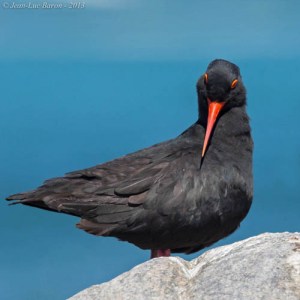
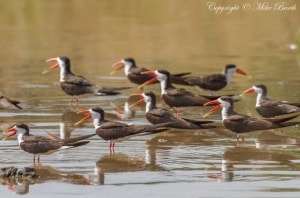
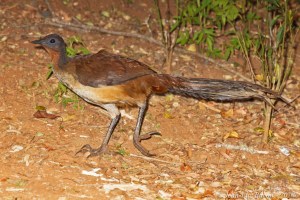
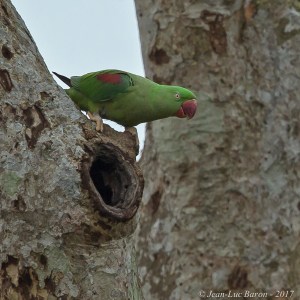
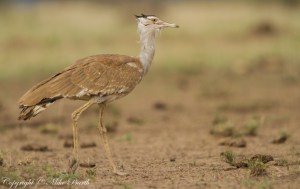
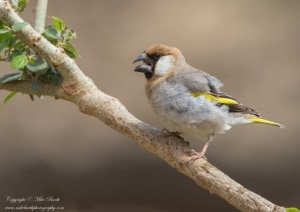
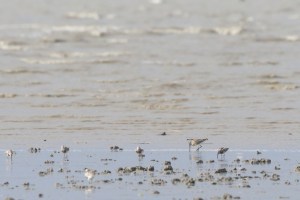


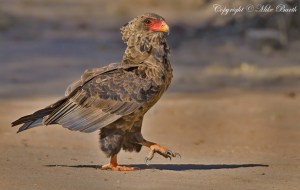
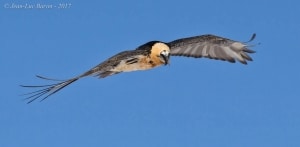
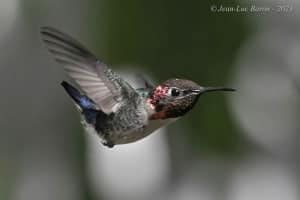
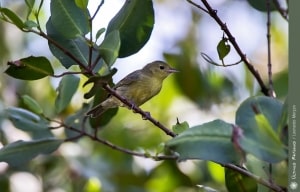
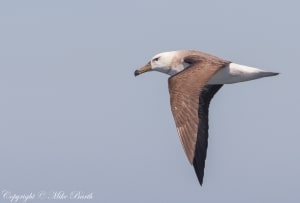



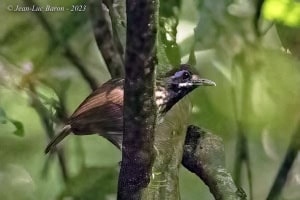
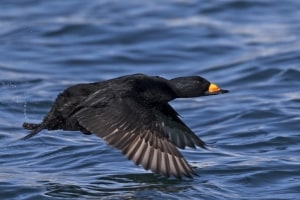
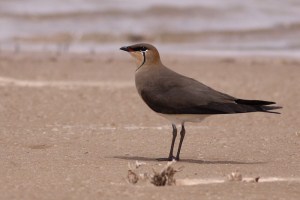
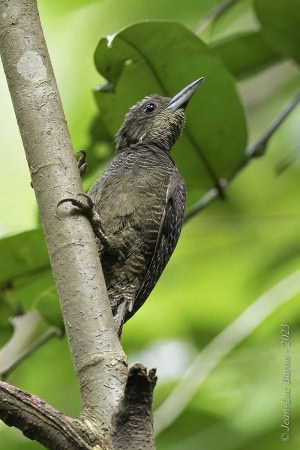
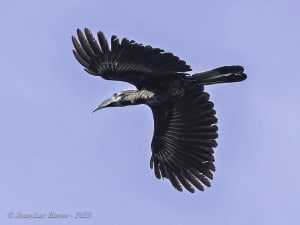

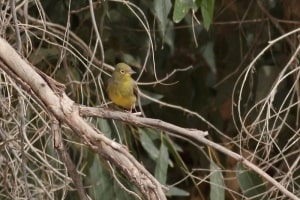



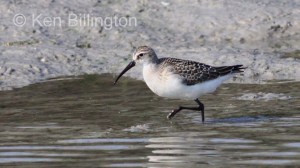
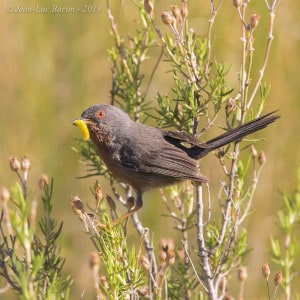
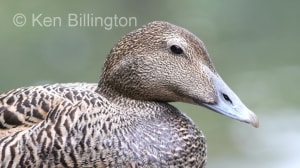
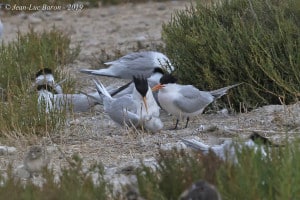
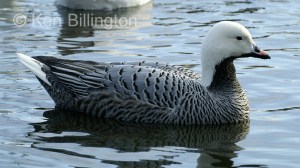
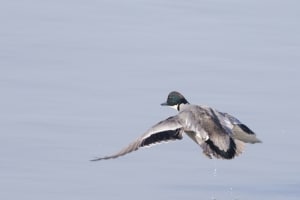
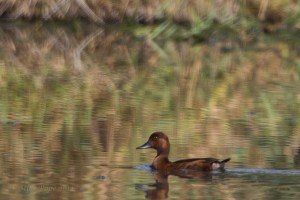
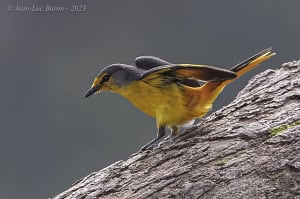
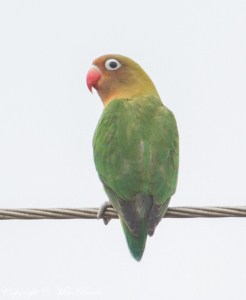
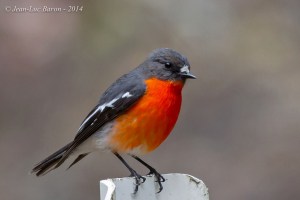
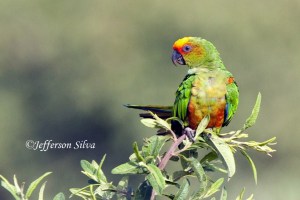




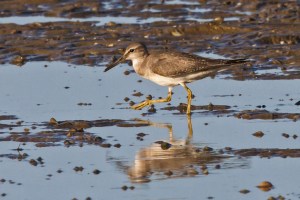
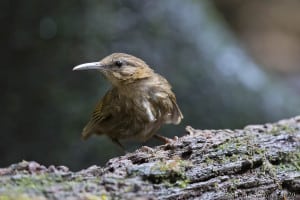
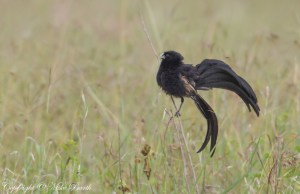
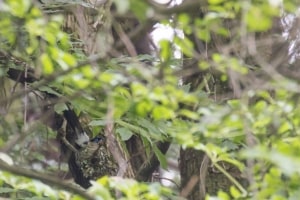
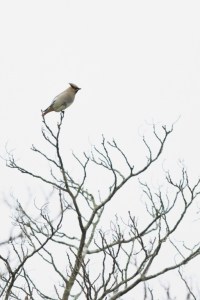

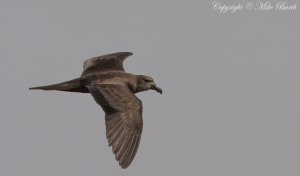
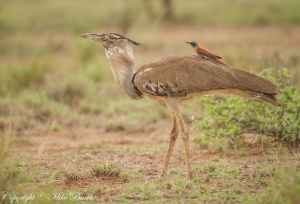
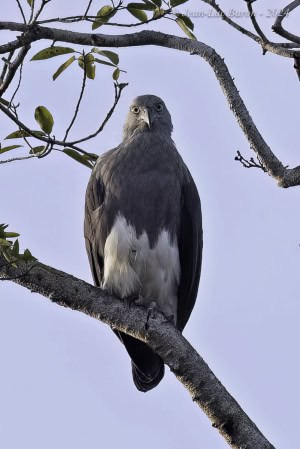
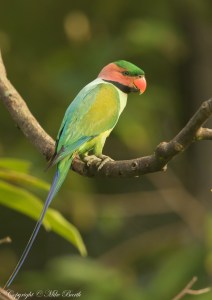
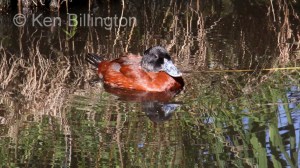
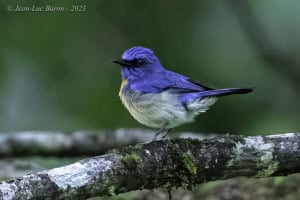

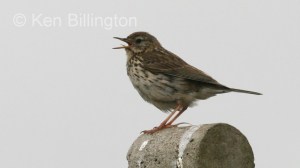
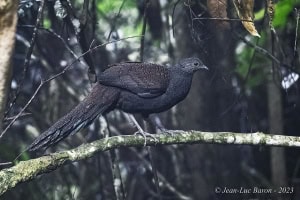

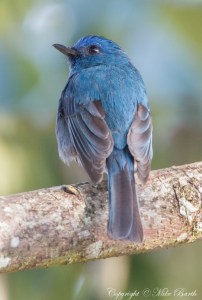
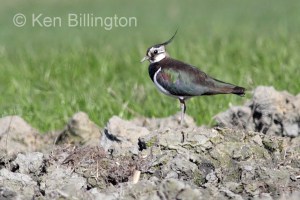

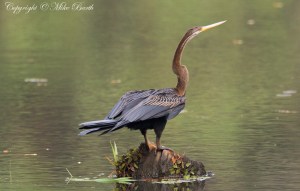
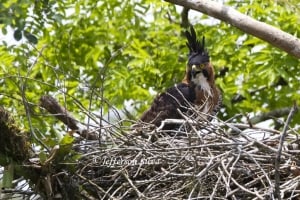
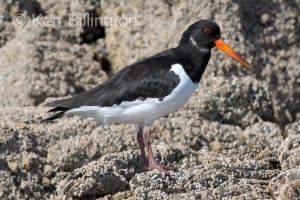
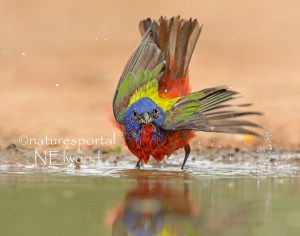
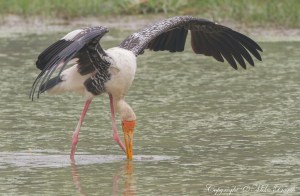

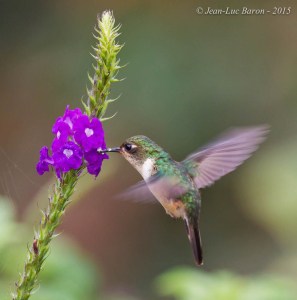
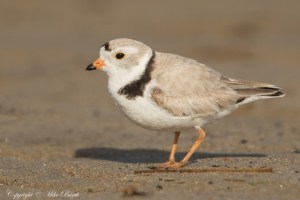

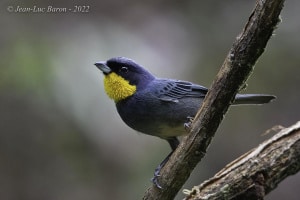
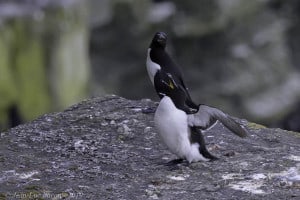
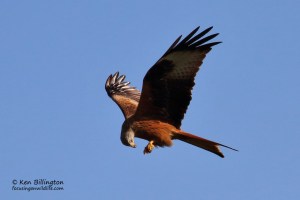
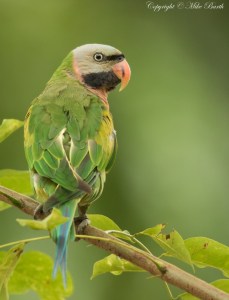
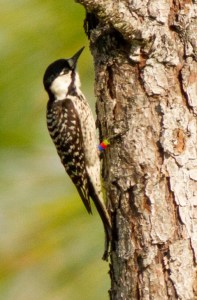
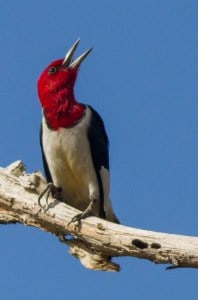
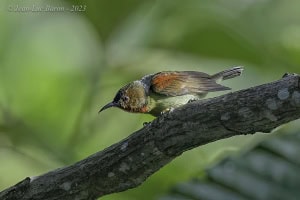
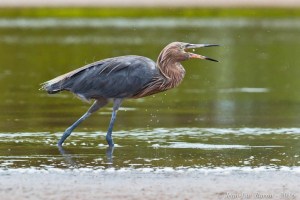
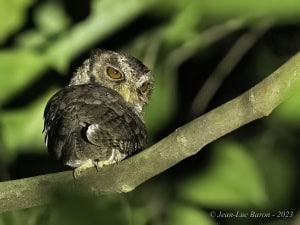
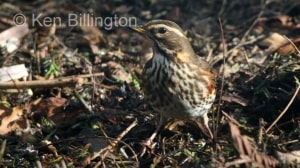
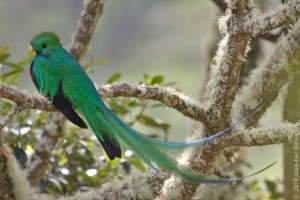
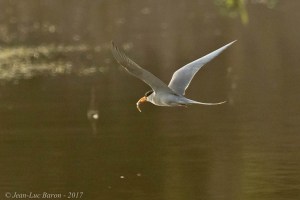
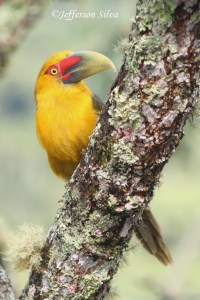
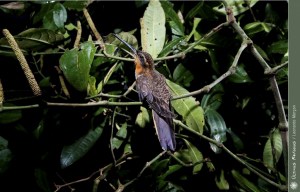
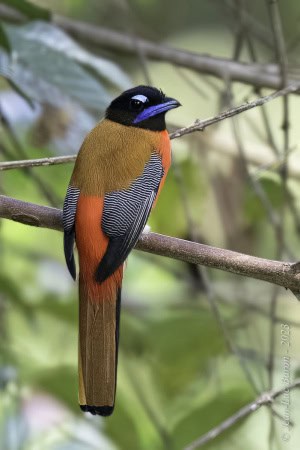
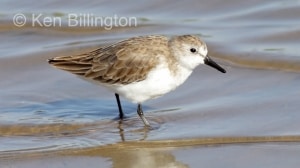

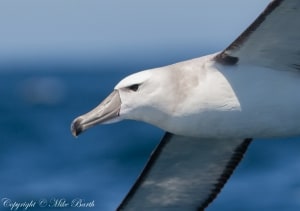
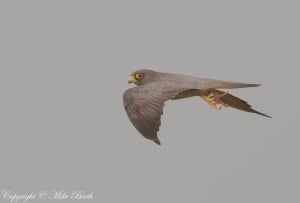
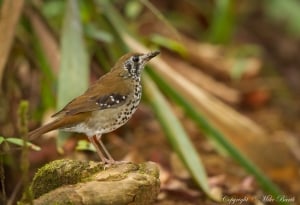
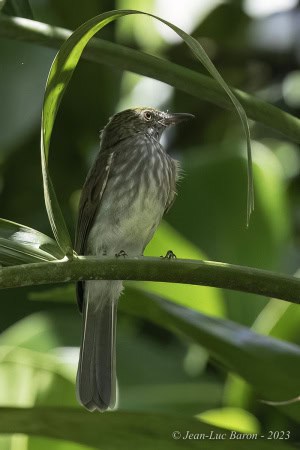
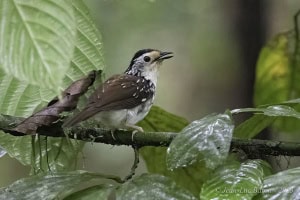




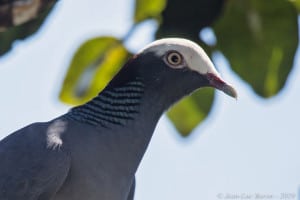

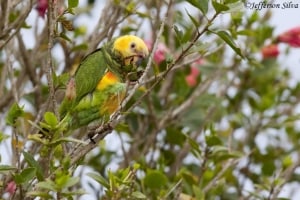

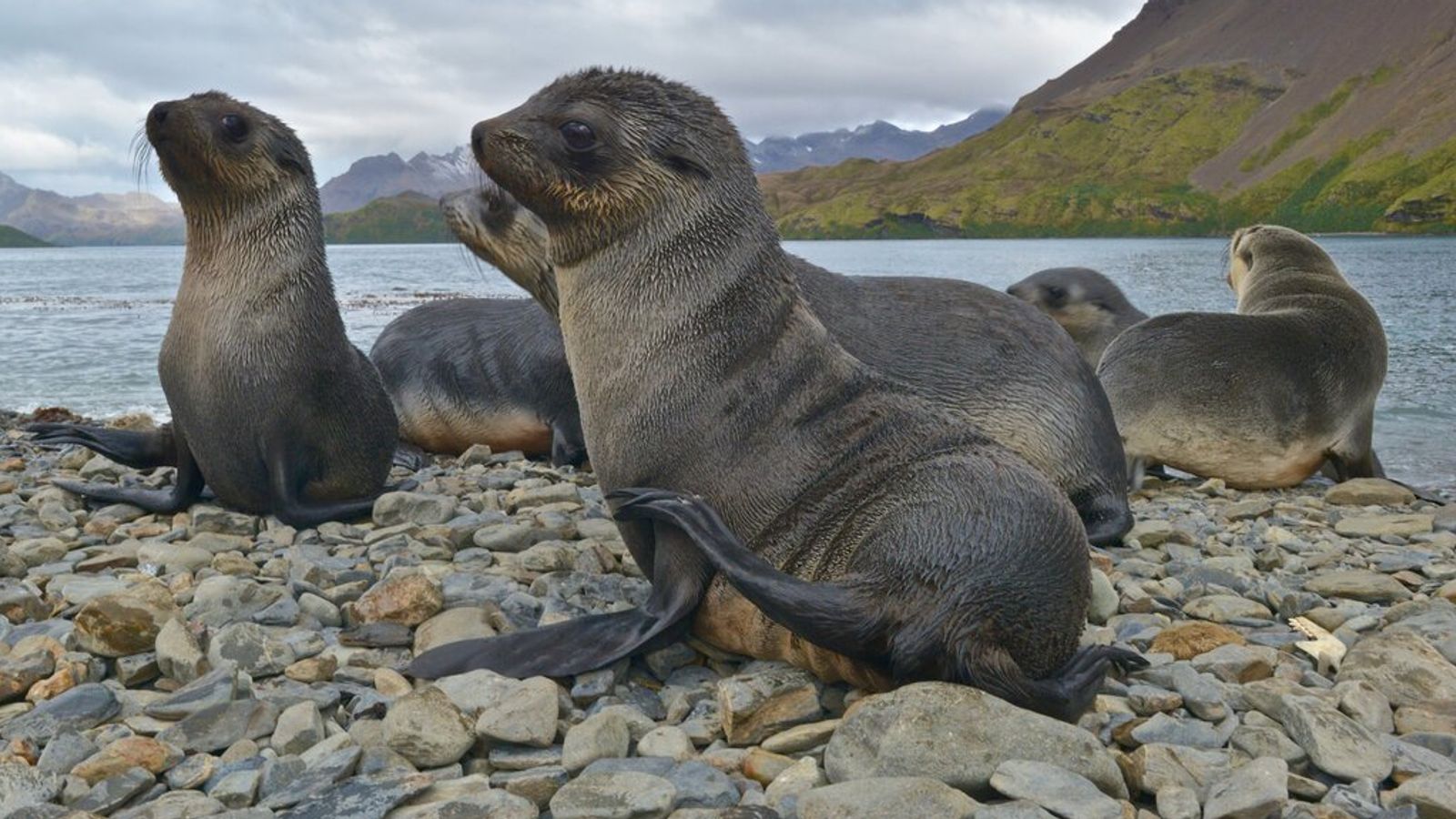
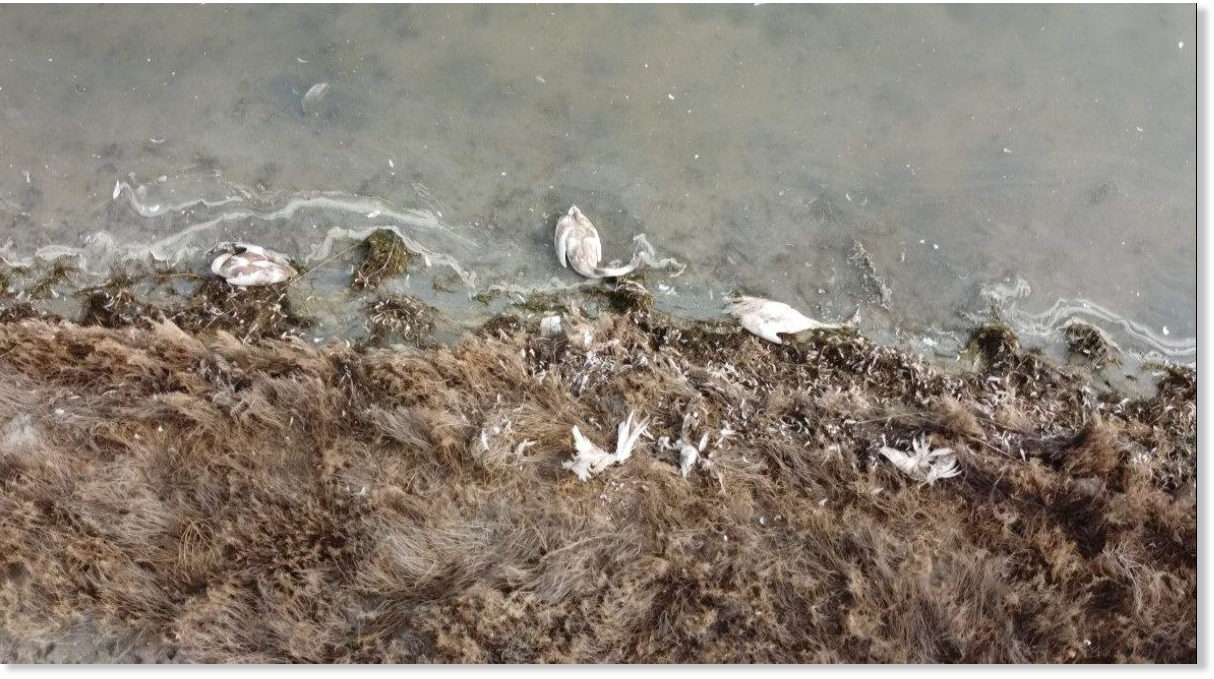
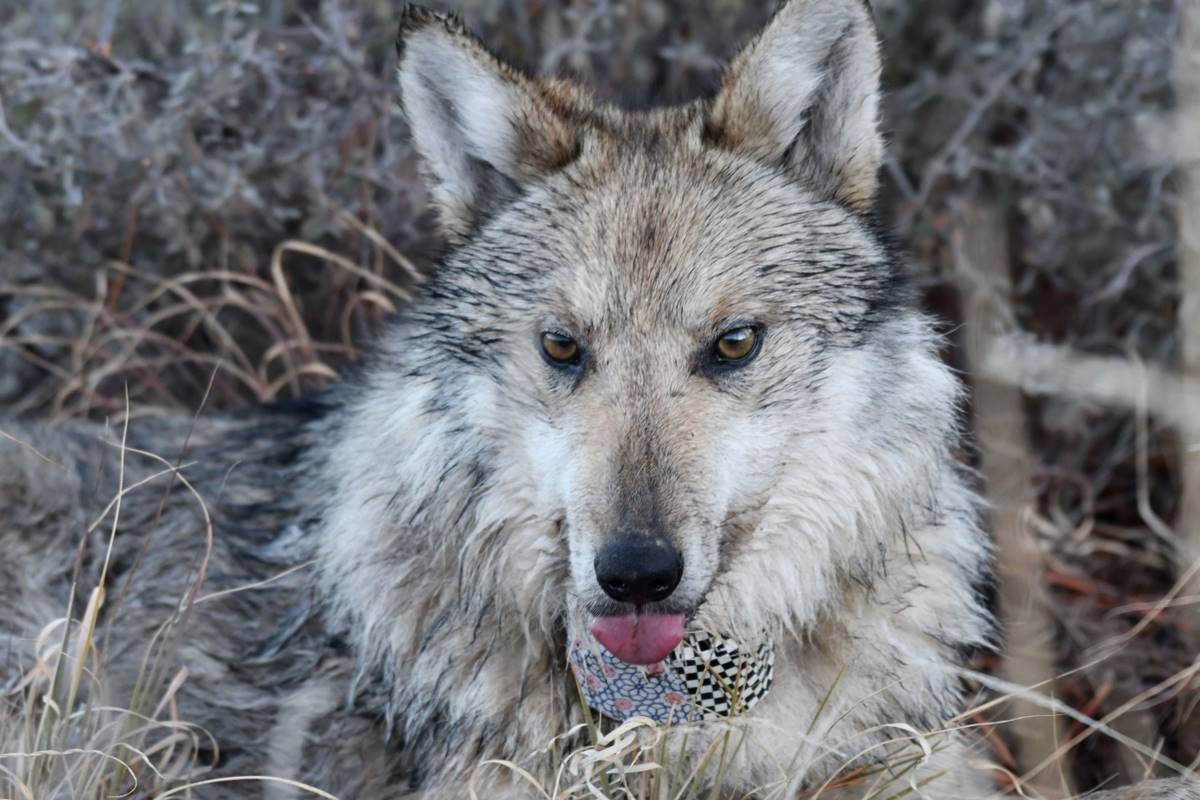

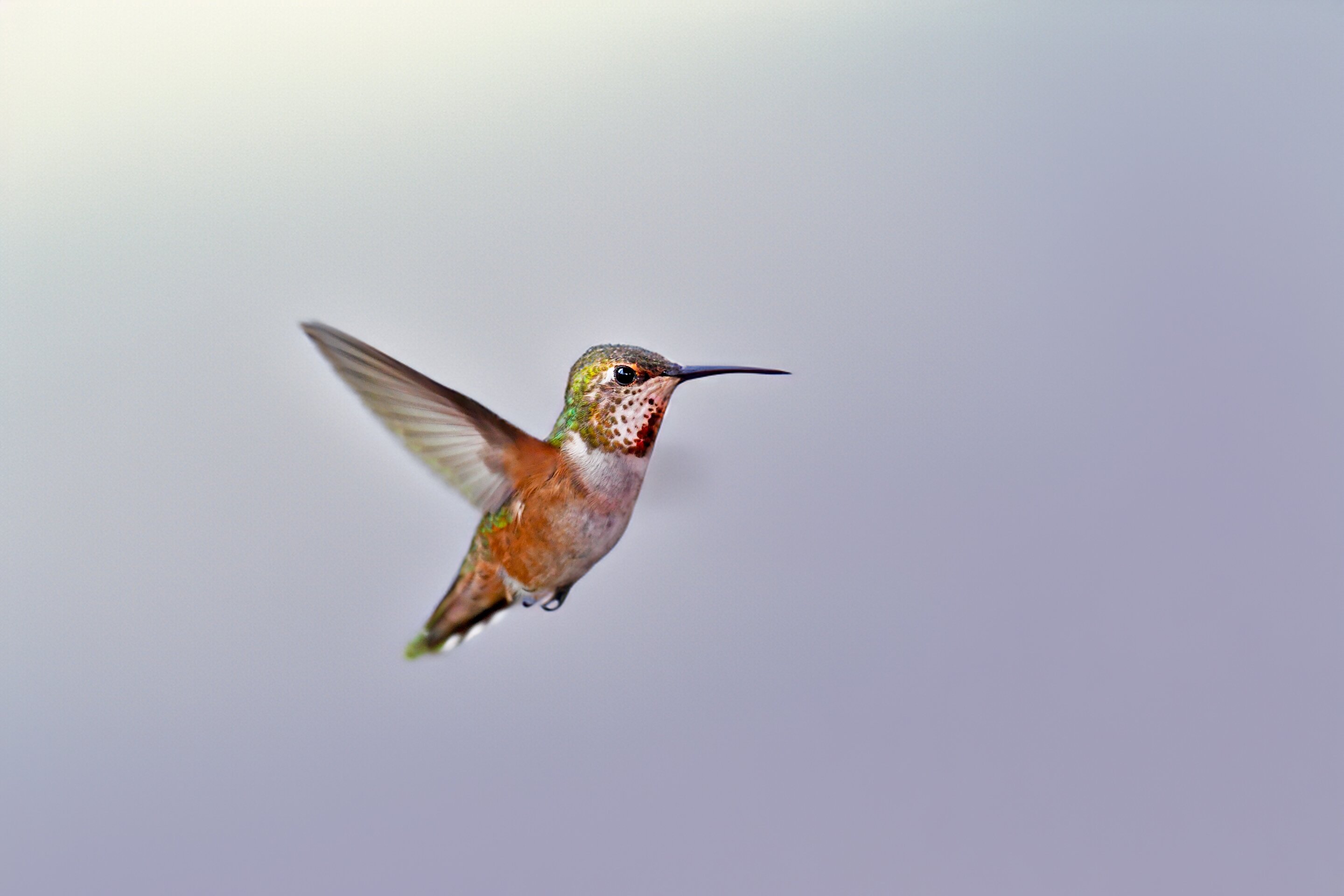
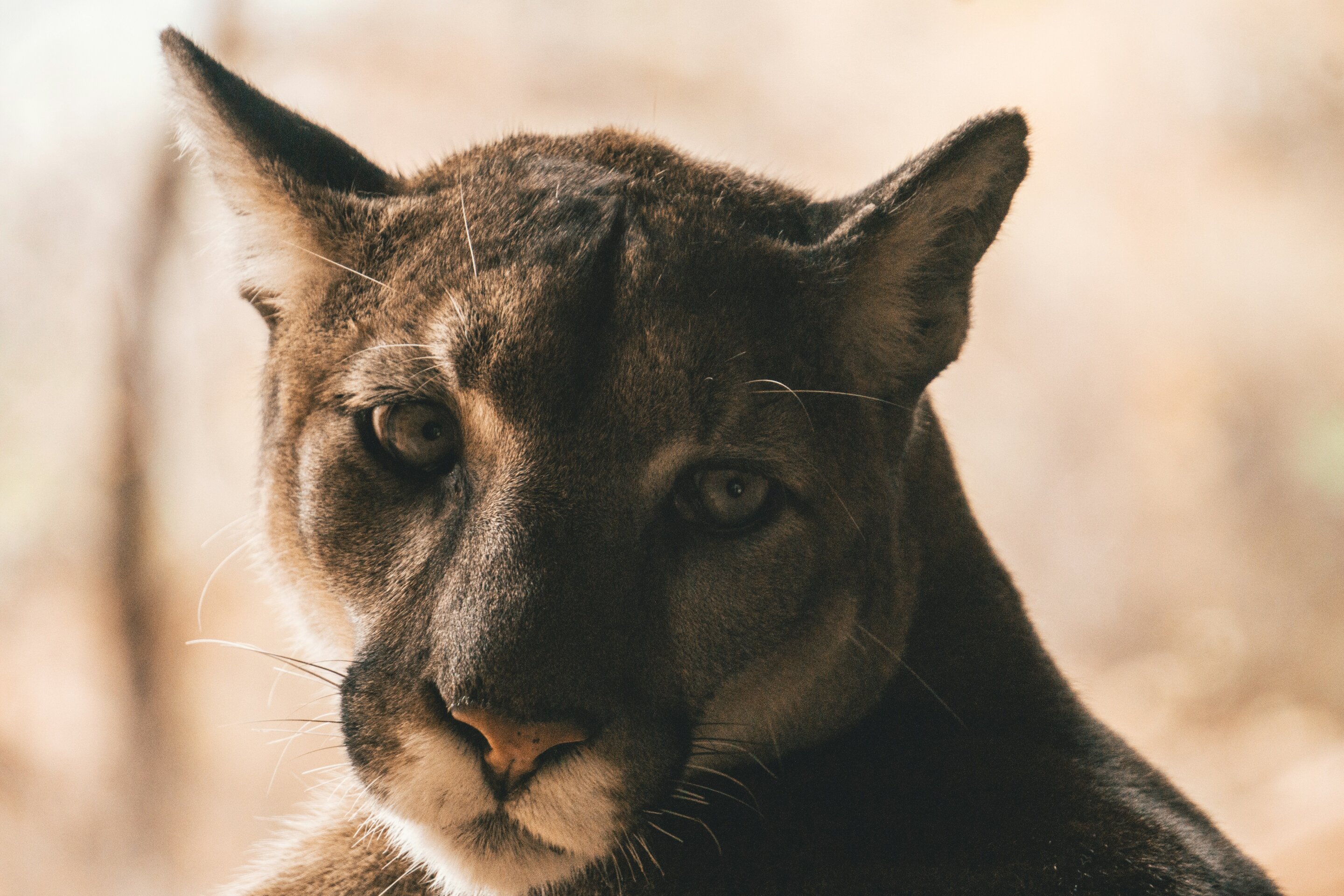
Leave a Reply